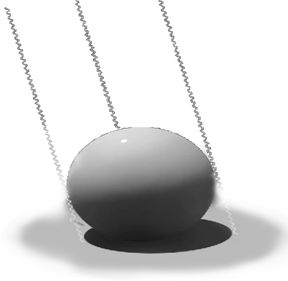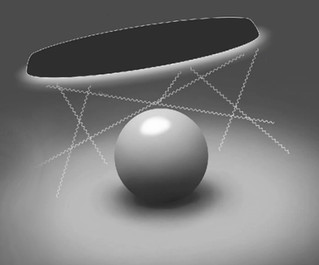(How you could implement it + create dramatic compelling art scenes)
Understanding how to create compelling art scenes with different lighting schemes and dramatic shadows is critical to a proficient artist. We should try to understand the physical interactions light has with various surfaces and textures and how our eyes and brains react in order to interpret information. Also how we can make scenes visually appealing.
Types of Lighting Schemes:
Key Light:
The key light, generally speaking, is the strongest light source, it is the one that defines the emotional impact of your scene. It is the dominant light source in the scene that affects the form of the object.
Rim Light:
The rim light is when light is being directed from behind the object, catches on, and wraps around the outer edges of the object.
It is often used to help define and outline shapes in a scene that would otherwise be lost in darkness. It helps add dramatic appeal, but it has little affect in describing the form of the object. It's dominant purpose is to add emotional and compositional impact. Any lighting scheme will be a combination of these 3 lights I have just mentioned.
This is the 3 point lighting scheme and it is often used in photography.
Although, I don't think it's necessary to use all 3 of them,the most important point to remember is that one light must always be the most dominant so that the viewer knows where to look in the scene. There are a lot of permutations that you can explore with in terms of lighting, so experimenting is effective when used in conjunction with the basics. There are probably certain schools of thought that abide by dogmatic rules in terms of lighting schemes but experimentation breeds innovative and imaginative art.
Sunlight, spotlight or distant light sources tend to be fairly neutral lights.
On the other hand, when you have nearby sources or a focused point light source with multiple objects in a scene the nearby light sources tend to be more active; adding tension to the scene.They can be harder to paint because the light is changing at every angle, but the scene can look much more interesting due to this very reason. In contrast, if you're not careful or use this lighting scheme inappropriately than it can come off as a distraction.
Oversized or Diffuse Light Sources:
With oversized or diffuse light sources, you can achieve a very soft and friendly appearance for your scene.These type of light sources are often used to make fashion models look attractive in magazines. When used in movies, they would use double the fill lights as oversized sources to cause the audience to feel more engaged with the character(s). By allowing certain areas of an object to reside in shadows or having another object placed intentionally near or above the object partially casting shadows this will evoke a mysterious tone to the scene.
For example, imagine you set up a scene with a guy standing inside a room peering out the window and you place a soft diffused light on him, well this will tend to make him look more friendly and approachable. Whereas if you have the man standing in a dark room and bands of light are coming in through the window blinds it will start to feel more mysterious or eerie.
The information presented here is only the basics of light's physics (part 2) ,stay tuned for part 3 of "Physics/Science of Light" by subscribing to my newsletter for more related updates.
Please share if this blog post was helpful to you in any way it would mean a lot to me.
Thanks for the visit, cheers:)








No comments:
Post a Comment